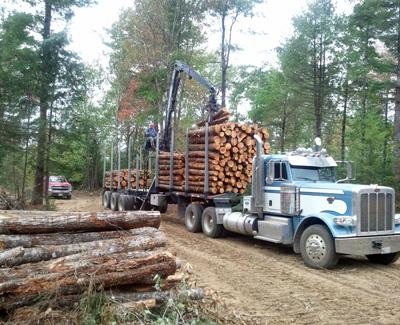A Long-Term Monitoring Program to Assess the Northern Forest’s Logging Industry Health

The forest resources industry is an integral part of the economy, ecology, and culture of the Northern Forest region of New York, Vermont, New Hampshire, and Maine. The logging sector provides significant employment to rural communities in addition to harvesting and transporting a valuable and renewable resource to processing facilities. To better understand trends and concerns in the logging sector, NSRC researchers conducted a survey of logging businesses in the region.
Across all four states, 86% of logging businesses had five or fewer employees, 60% of business owners were greater than 50-years-old, and more than 50% of business owners have been in the logging industry for at least 30 years. Tree-length harvest systems (chainsaw, cable skidder) are most common throughout the region, but rank last in total production. Production by harvest system is not uniform across the region; 77% of production in Maine is by whole-tree systems compared to only 12% in New York. Weather conditions were cited as the most important limitation to maximum production with close agreement in regard to other top-rated limitations such as market price, mechanical breakdowns, road conditions, and mill closures and quotas. Some logging businesses have made significant capital investments in new logging equipment, but on average harvesting machines have close to 7,000 hours and primary transportation equipment have over 10,000 hours.
Researchers made strong connections to the logging community through this study, which establishes a baseline for future analysis of trends in the logging industry and a tool for logging contractors, policymakers, or professional organizations to identify areas for improvement in forest operations.
